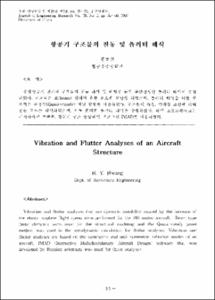Theoretical Perspectives of Intra-Metropolitan Spatial Segmentation of the Labor Market
- Alternative Title
- 대도시 노동시장의 공간적 분화에 관한 이론적 고찰
- Abstract
- 대도시 노동시장의 공간적 분화는 국지적 노동시장의 노동공급과 수요의 양측면에서 유동성의 장애요인 때문에 발생하게 된다. 이러한 현상은 특히 부차적 저임금노동자들의 노동공급과 수요에서 일반적으로 나타난다. 노동공급측면에서의 장애요인으로는 직장정보획득비용, 통근비용, 주거지이동에의 장애요소 등을 들 수 있다. 노동수요측면에서의 장애요 인으로는 직장입지마다 특별한 기술과 생산품 때문에 이에 적합한 노동수요가 국지적으로 다를 수 있다는 점과 인종차별적 노동수요 등을 들 수 있다. 본고에서는 이러한 노동시장에서의 공급과 수요에 나타나는 장애요인들을 논의하고 인구학적인 그리고 기술수준별 노동계층간에 나타나는 대도시 노동시장에서의 공간적 분화현상을 이론적으로 고찰한다. 노동공급측면의 장애요인은 직장탐색모형을 적용하여 설명하며, 노동수요에서의 장애요인은 잠재적 계약모형을 적용하여 설명한다.
Intra-metropolitan spatial segmentation of the labor market requires barriers to mobility on both supply and demand side of the local labor market. The phenomena of spatial segmentation of the labor market are particularly applied to the secondary workers rather than to the primary workers. Supply side barriers include the costs of obtaining job information regarding jobs outside of the immediate area, commuting costs, and barriers to residential mobility. Demand side barriers include site-specific technology and product demand, and discrimination. In this paper, I discuss these barriers and examine their implications for differences in segmentation by demographic and skill groups at the intra-metropolitan scale. In particular, I apply a job search model to examine supply side barriers such as information and commuting costs, and an implicit contract model to explain demand side barriers such as dual/internal labor market and firms'(re)location strategies.
Intra-metropolitan spatial segmentation of the labor market requires barriers to mobility on both supply and demand side of the local labor market. The phenomena of spatial segmentation of the labor market are particularly applied to the secondary workers rather than to the primary workers. Supply side barriers include the costs of obtaining job information regarding jobs outside of the immediate area, commuting costs, and barriers to residential mobility. Demand side barriers include site-specific technology and product demand, and discrimination. In this paper, I discuss these barriers and examine their implications for differences in segmentation by demographic and skill groups at the intra-metropolitan scale. In particular, I apply a job search model to examine supply side barriers such as information and commuting costs, and an implicit contract model to explain demand side barriers such as dual/internal labor market and firms'(re)location strategies.
- Issued Date
- 1995
- Type
- Research Laboratory
- Alternative Author(s)
- 김재홍
- Publisher
- 사회과학논집
- Language
- eng
- Rights
- 울산대학교 저작물은 저작권에 의해 보호받습니다.
- Citation Volume
- 5
- Citation Number
- 2
- Citation Start Page
- 143
- Citation End Page
- 165
- Appears in Collections:
- Research Laboratory > Journal of social science
- 파일 목록
-
-
Download
 000002025057.pdf
기타 데이터 / 455.2 kB / Adobe PDF
000002025057.pdf
기타 데이터 / 455.2 kB / Adobe PDF
-
Items in Repository are protected by copyright, with all rights reserved, unless otherwise indicated.